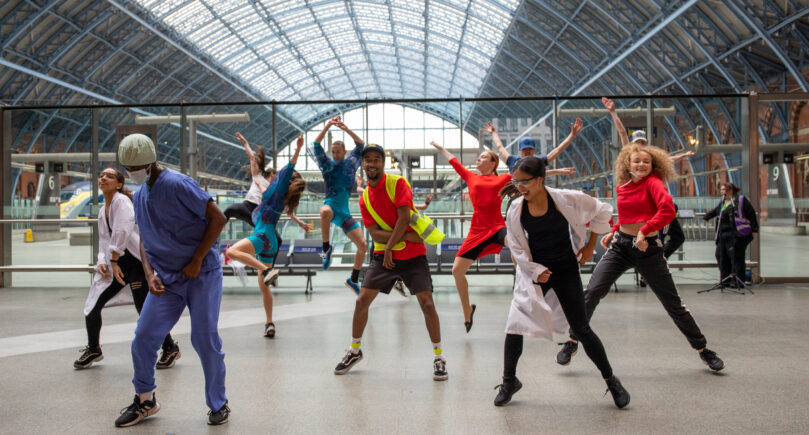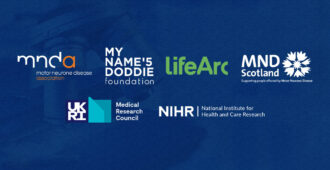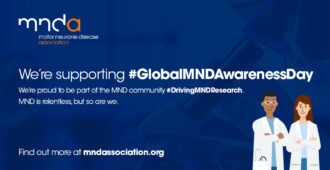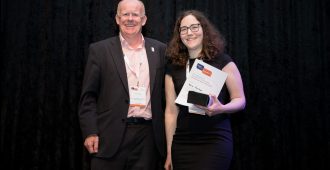We were delighted to be invited to take part in ‘Star Cells’, a science-inspired performance art project in support of the Motor Neurone Disease Association, one of the events held last week to mark Global MND Awareness Day on 21 June.
Inspired by the exciting and ground-breaking research into neuroscience taking place at the Francis Crick Institute in London and at Manchester Metropolitan University (MMU), Star Cells uses dance and film to inform and illustrate the science of how the body moves and reacts. The project conveys the impact of neuromuscular diseases in a powerful and visual medium that raises awareness of these conditions. This is all presented through a new self-guided tour that you can take part in, with a live dance display by the Combination Dance group that took place at St Pancras International, London.
Watch a short highlights video here:
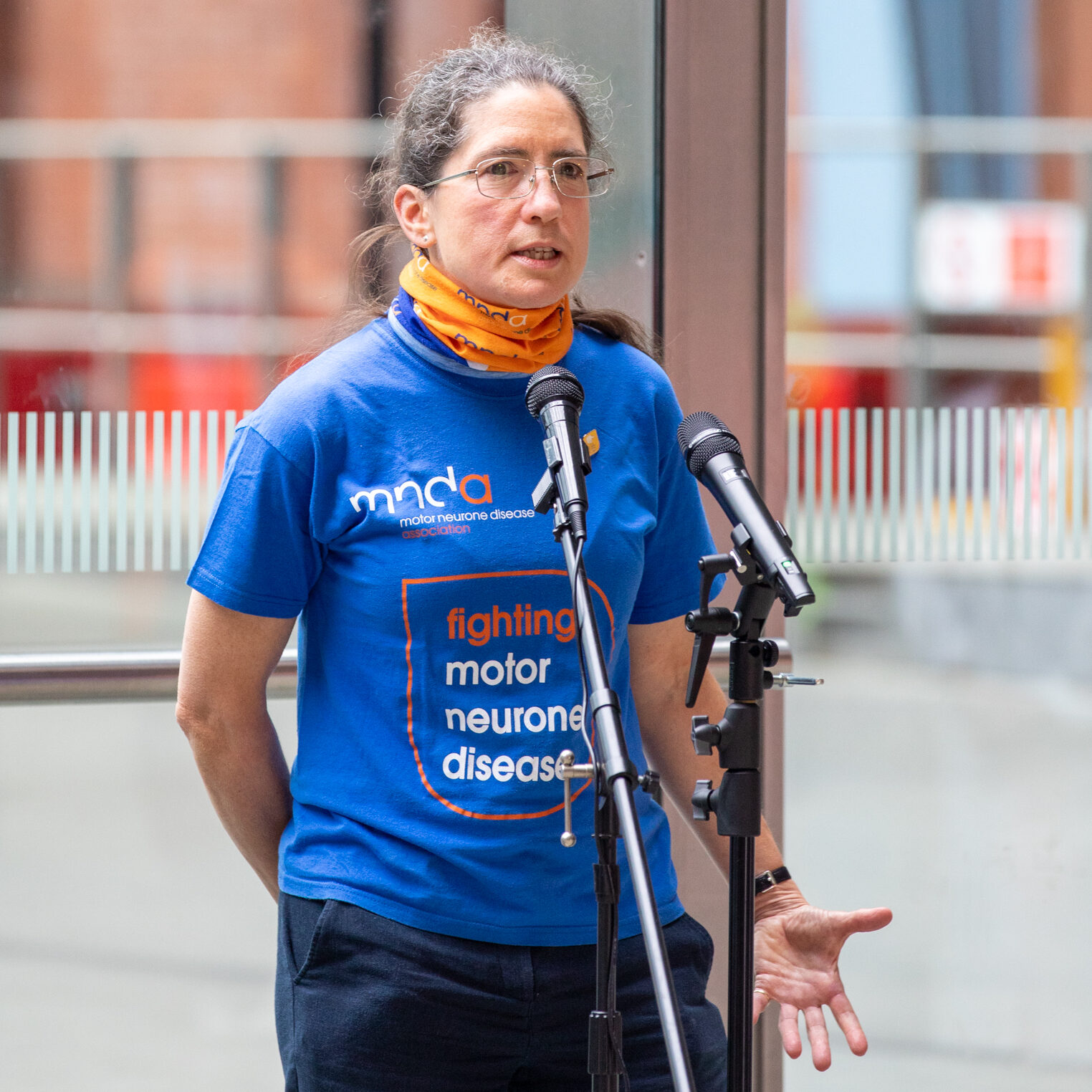
As someone with who enjoys attending live dance performances (though obviously not in recent months), I was very pleased to represent the MND Association at this event. I had the opportunity to meet the researchers whose work had provided inspiration for the project, and to speak briefly with some of the dancers. The special performance created for MND Awareness Day was both moving and beautifully executed. As photos and videos show, the dancers were able to include references to the athleticism of Rob Burrow, the work of research scientists and healthcare professionals and to the range of other people who might be affected by MND. An extra fact I learnt on the day – the dancer portraying a doctor (dressed in ‘scrubs’) is actually a medical student.
Sadie Vile, MND Association Research Grants Manager who attended the socially distanced event.
The moving self-guided walk takes people through 6 locations in and around St. Pancras International, Kings Cross Station and The Francis Crick Institute. Viewers can navigate the experience via an interactive map, accessible via smartphone. The experience includes immersive and 360 camera features, celebrating the locations’ beautiful architecture and landscape, whilst raising awareness of the world class science and culture on their doorstep. Star cells is a celebration of inclusivity, diversity, and togetherness.
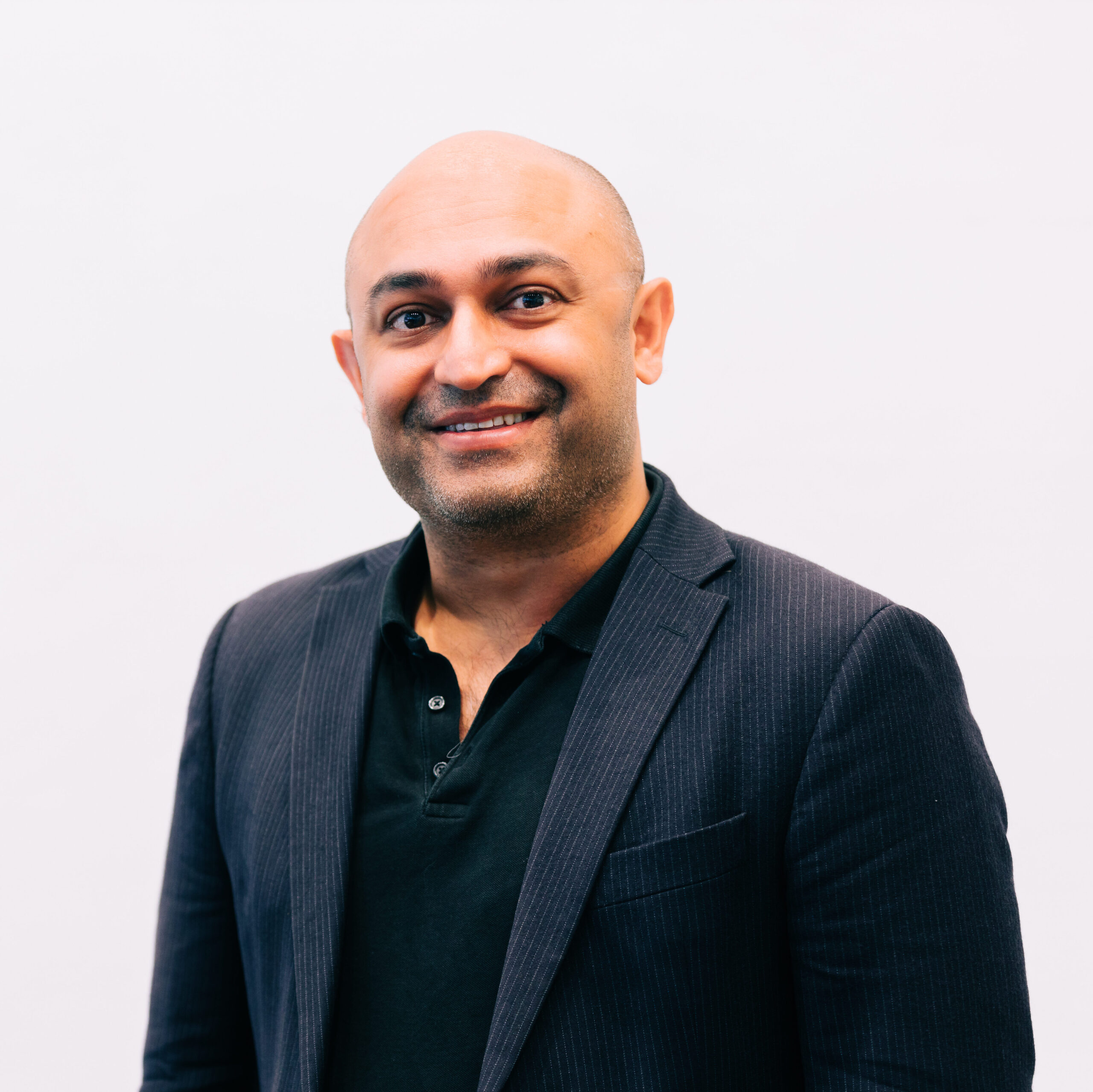
Performances and interviews on the tour were pre-recorded, including an interview with Professor Rickie Patani who is one of our Lady Edith Wolfson Clinical Research Fellows (see Location 3 on the virtual tour below).
Follow the Star Cells trail
If you can get to St Pancras International, simply download or print the map and watch the videos safely enroute from the Star Cells website.
If you are not local to St Pancras or would simply like to take part in the tour in the comfort of your own home, the experience can be enjoyed virtually on the Star Cells website, or navigate through the videos below:
- Location 1 – Granary Square. Anne-Marie Smalldon, Artistic Director at Combination Dance introduces the event.
- Location 2 – King’s Cross Light Tunnel. The Star Cells Trio, through dance, tell the story of the processes leading to the breakdown of motor neurons.
- Location 3 – The Francis Crick Institute. Meet Rickie Patani and the Patani Lab Team. This short film takes you inside The Francis Crick Institute to meet Prof Rickie Patani and PhD student Doaa Taha.
- Location 4 – The Pianos in the Arcade. ‘Flex Some Muscle’, starring Jeffrey Felicisimo, demonstrates through dance finely tuned muscles and movements, that ultimately leads him to hit a wall, representing the onset of MND.
- Location 5 – The Renaissance Hotel. Here we are introduced to Dr Emma Hodson-Tole, from Manchester Metropolitan University, who talks about her work developing tools to study human muscle and nerve systems.
- Location 6 – The Grand Terrace. This final dance piece was inspired by Lucy Lintott, who was diagnosed with MND at just 19-years old. The dancers used comments from one of her videos where she talks about finding herself again to create the dance.
We would like to extend our grateful thanks to the Star Cells team who launched this performance in support of the MND Association. Visit the Star Cells website to find out more about this interesting and innovative event.

